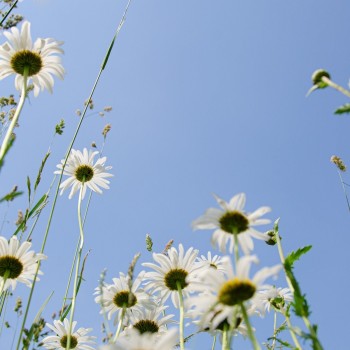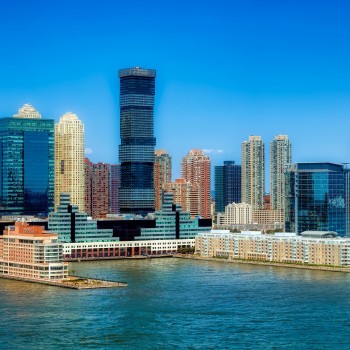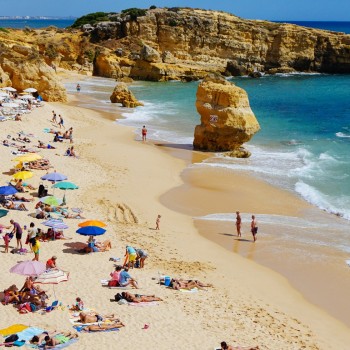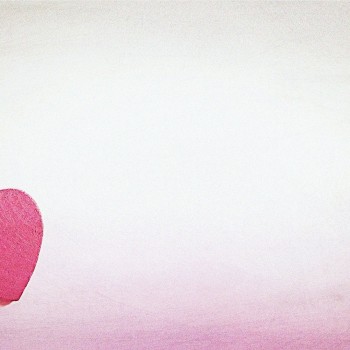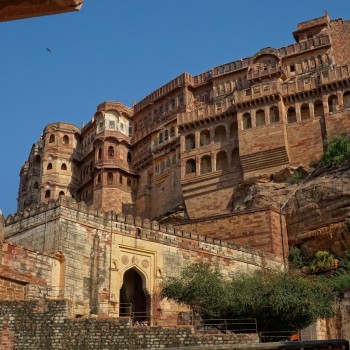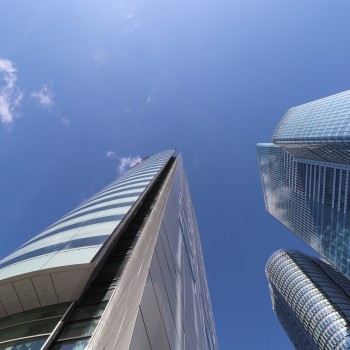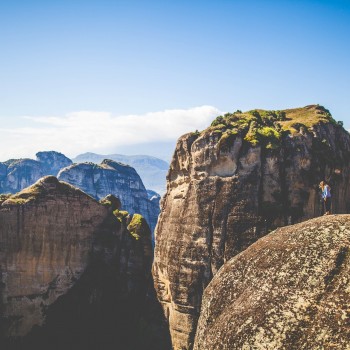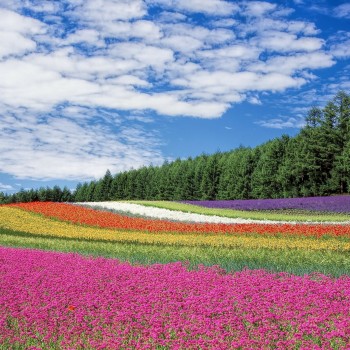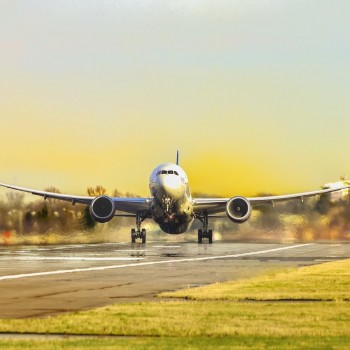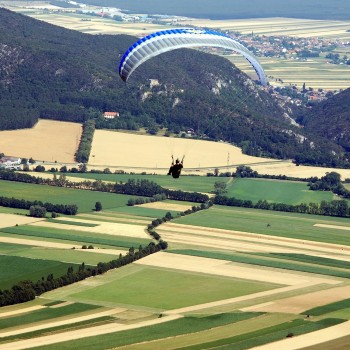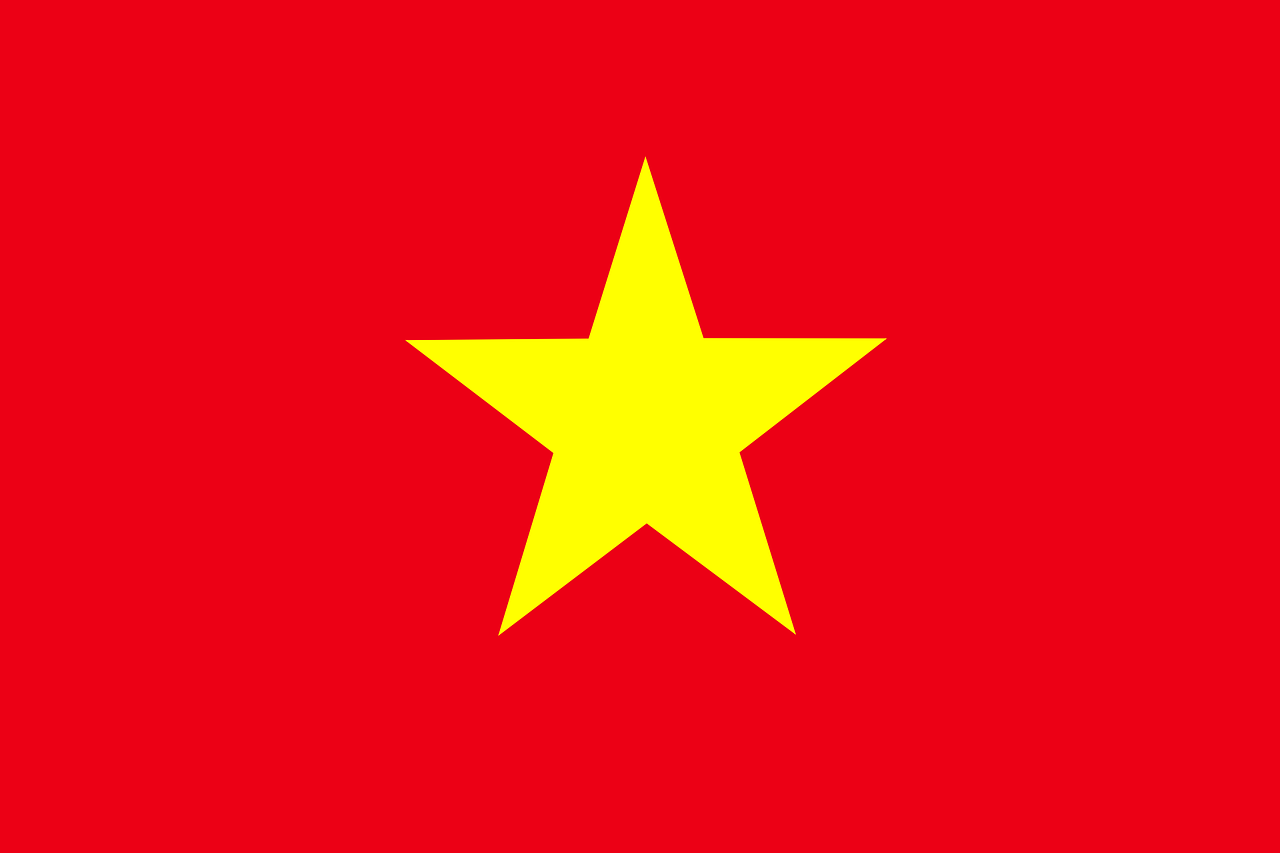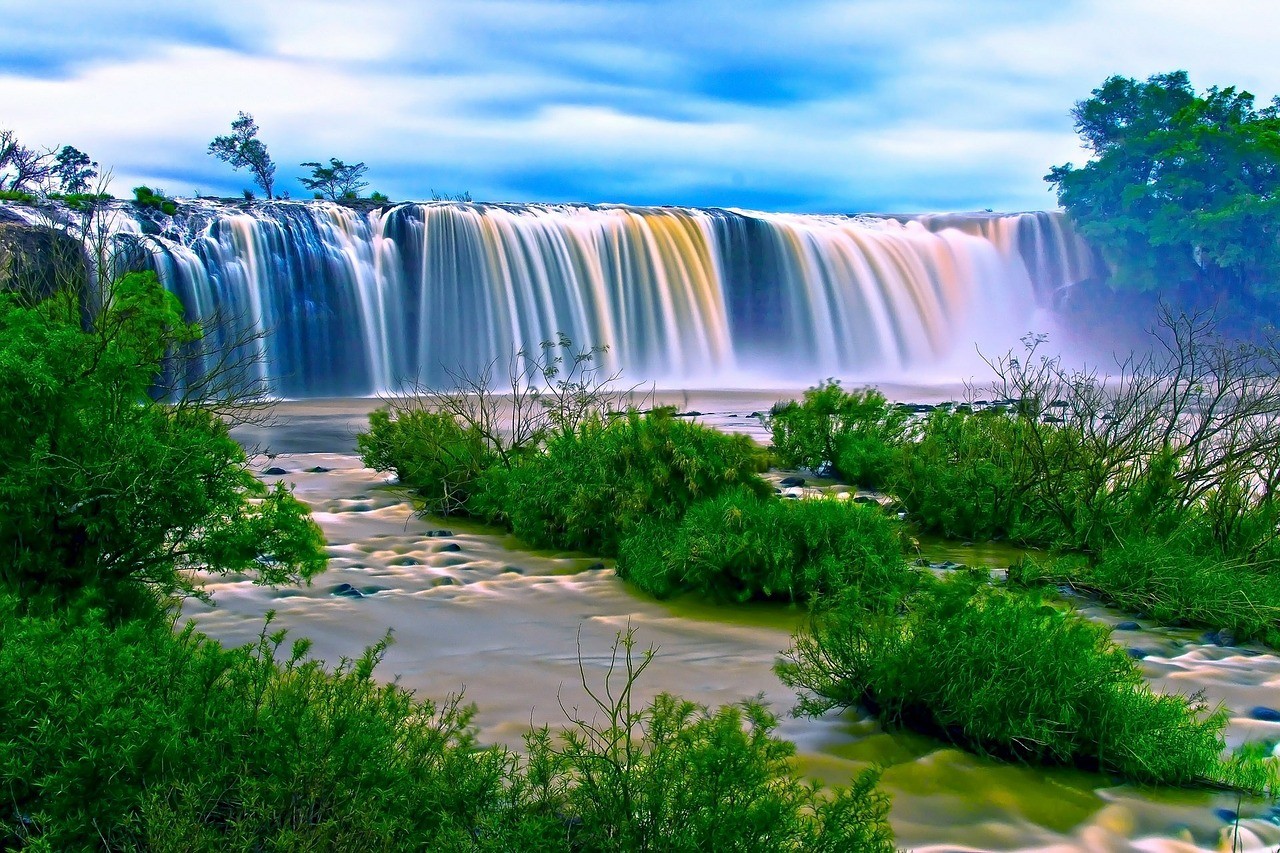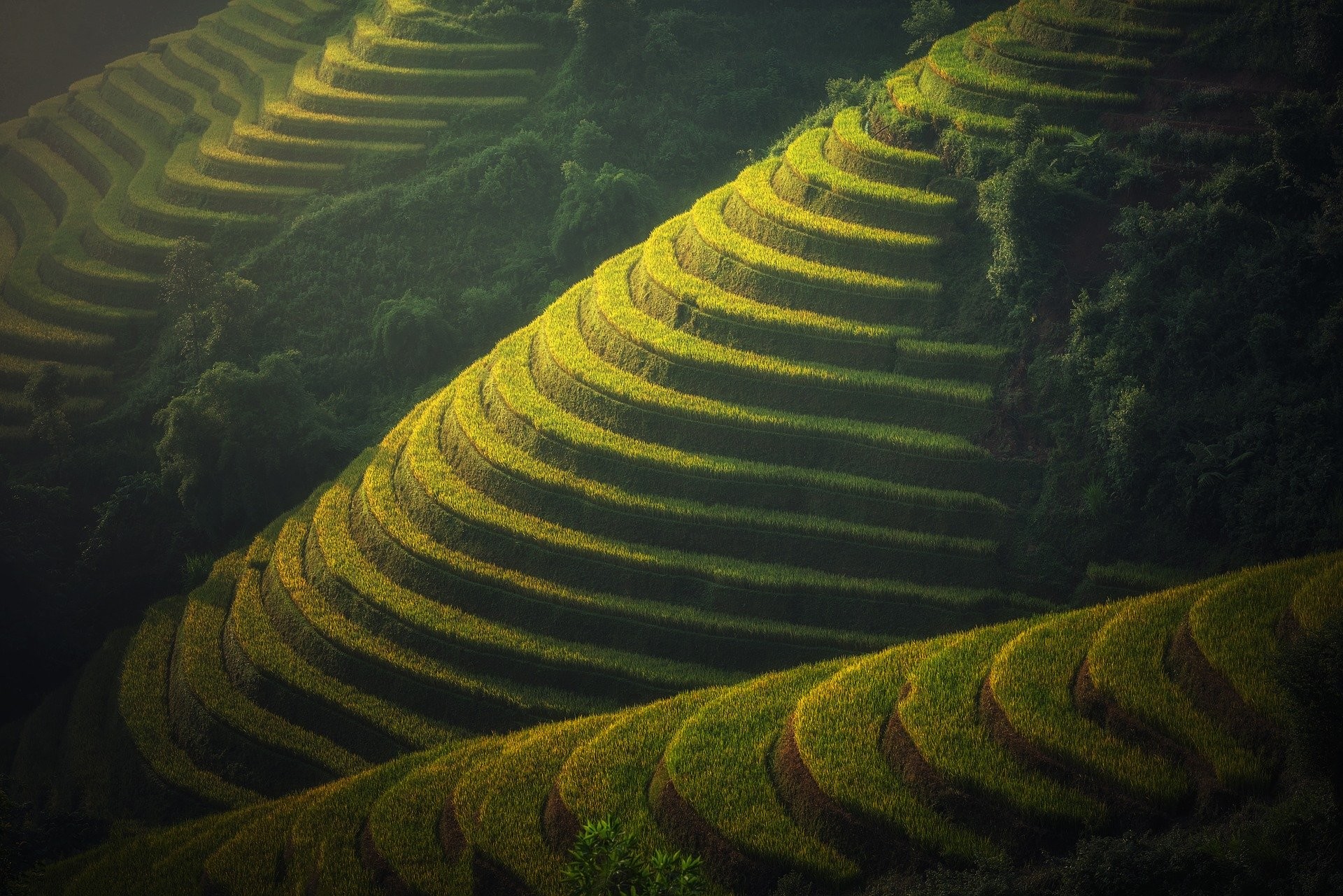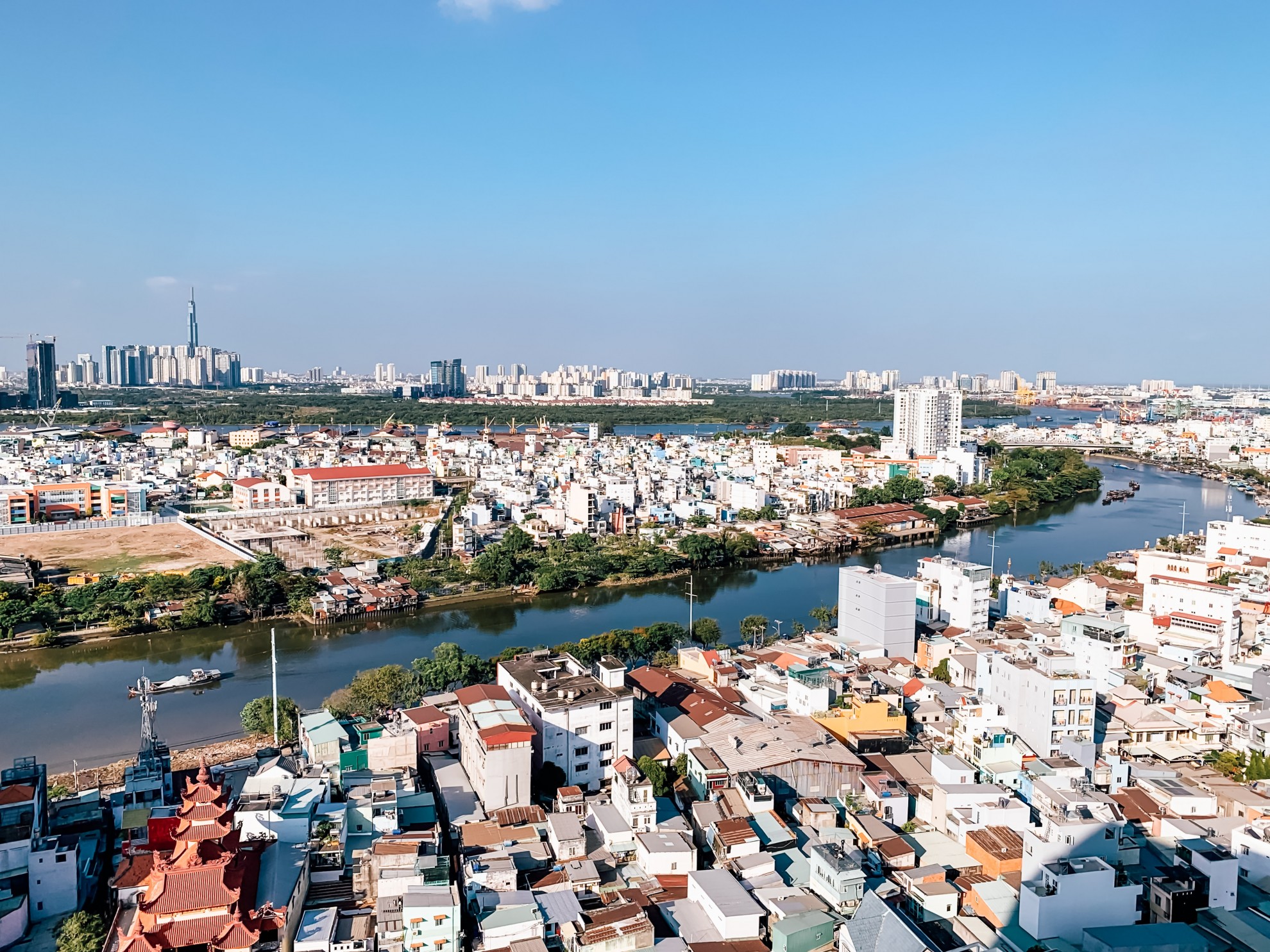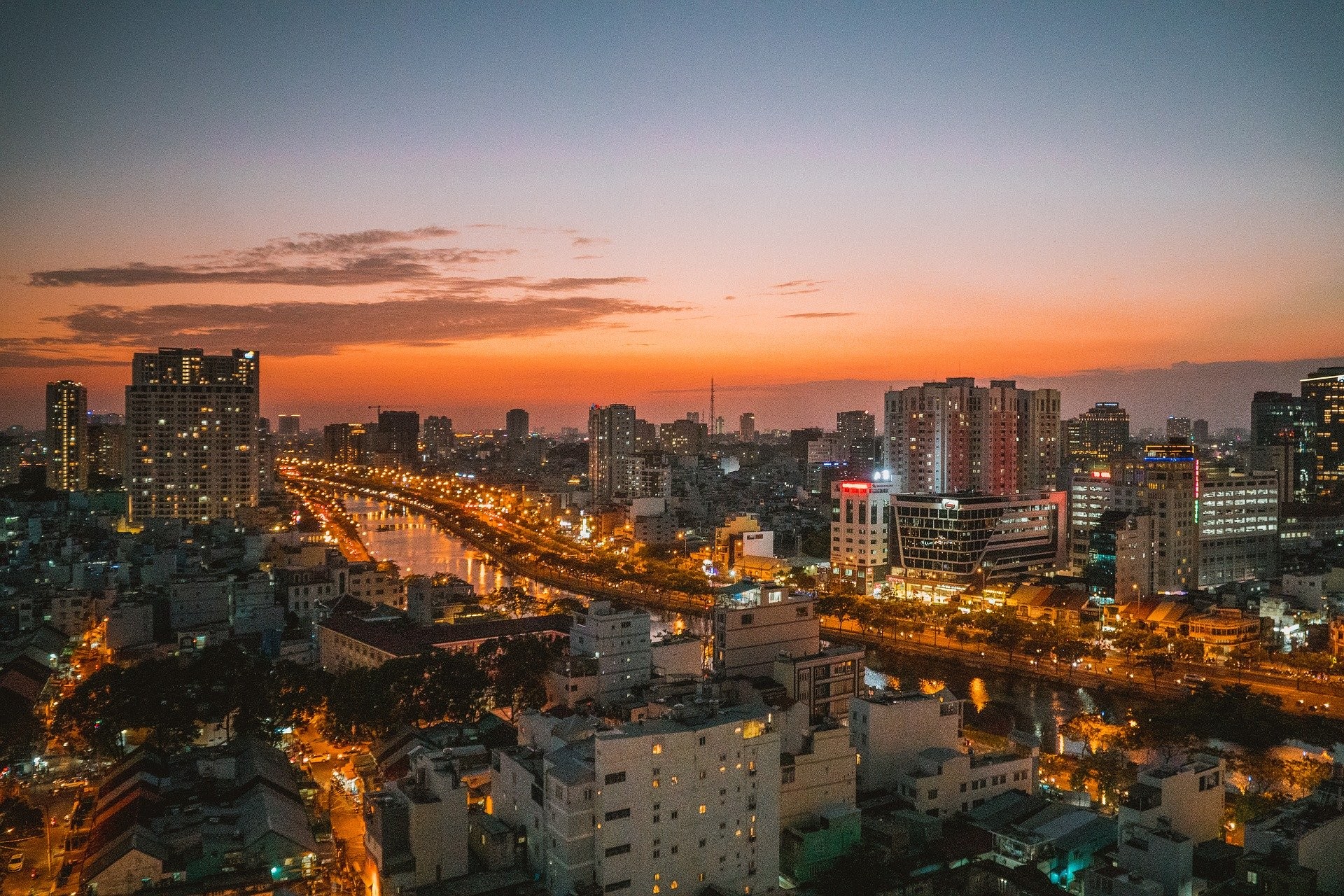Vietnam
Vietnam
Capital city description
Hanoi is the bustling capital city of Vietnam. Hanoi is located about 1,760 km north of Ho Chi Minh City, the largest city in Vietnam. Hanoi is the cultural and political, and entertainment hub of Vietnam. It has a stable and robust economy and the highest HDI among Vietnamese cities. Industry and trade are well-established and rapidly growing sectors of Hanoi's economy.
The agricultural industry, which formerly played a vital role in the city's economy, has been dramatically modernized. Hanoi was the only Asia-Pacific locality to be granted the "City for Peace" title by UNESCO on 16 July 1999, acknowledging its contributions to the struggle for peace and its efforts to promote equality in the community, protect the environment, and promote the environmental culture and education and care for younger generations.
Climate
Vietnam has a tropical climate that is dominated by the monsoon season. The temperature in Vietnam typically ranges between 70°F and 95°F throughout the year. The average annual humidity is around 85%. Vietnam receives most of its precipitation during the monsoon season, but it also receives regular rainfall the rest of the year. The average annual rainfall is about 40 inches. The dryer season is approximately from November to April. In December and January, the mountains in the north can get much cooler.
- Spring: February to April
- Summer: May to June
- Autumn: August to October
- Winter: November to February
Languages spoken
Vietnamese is the national and official language of Vietnam. French is the most spoken foreign language in Vietnam. A legacy of colonial rule, French is spoken by a significant Vietnamese section as a second language. Russian, Czech, German, Polish, and English are also foreign languages in Vietnam.
Fun/Fascinating Facts
- Vietnam is home to the world's largest cave, Hang Son Doong. Stretching over three miles, Hang Son Doong is a natural wonder, located in Phong Nha-Ke Bang National Park, Quang Binh Province of Vietnam,
- The body of Vietnam's first president Ho Chi Minh also known as Uncle Ho, who died in 1969, was embalmed and displayed in a mausoleum. For many Vietnamese, this place is a religious pilgrimage destination.
- Weasel coffee, also known as Kopi Luwak or civet coffee in Indonesia and the Philippines, is Vietnam's most expensive coffee. The price for this specialty coffee is about USD150/kg, and it is one of the top 10 most expensive coffees in the world.
- Snake Wine is a famous weird drink in Vietnam. Bottles of wine with snakes coiled inside can be seen in shops and markets throughout the country.
- Vietnam is commonly known as "The King of Cashew," the world's largest exporter of cashew nuts. Vietnam produces more than 55% of the global supply and makes well over two billion dollars a year from the industry.
Unique Customs/Traditions
- Traditionally, Vietnamese people burn colored papers. These papers are known as "votive papers," which can be houses, clothes, fake money, cars, motorbikes, etc.; all are made of paper. They represent gifts for their ancestors. After being burnt, a little wine is sprinkled upon the ashes so that the spirits can ascend to heaven and bring gifts for the ancestors to use them.
- It is a tradition for Vietnamese to celebrate a one-month-old baby. Many Vietnamese mothers are expected to rest indoors for a month after giving birth at the celebration—friends and family gift mother and child with luck money.
- The Vietnamese are known to be polite, hospitable, and sensitive. They have a casual and friendly manner. They view friendship as being very vital throughout one's life. They are always open to visits from friends.
- In Vietnam, the typical engagement lasted six months with little contact between the bride and groom before the marriage. Traditionally the wedding was at one of the couple's houses.
- Shaking hands among Vietnamese women with each other or with men is unusual; they prefer respectful bow. Physical contact between grown-up relatives or friends, either males and females or between the same or opposite sexes, is not a common sight.
- People usually smile instead of saying "thank you." A smile is considered "thank you." Most Vietnamese people are very modest and deflect praise.
- Bring fruits, candy, or flowers when invited into someone's home, but avoid giving four of anything, as that number is unlucky. Gifts of wine and spirits are proper, while a cash gift in an envelope is always welcome at weddings.
Popular universities
| Name | Description | |
|---|---|---|
| Vietnam National University | Vietnam National University, Hanoi is a non-profit public higher education institution located in the urban setting of the large metropolis of Hano, Red River Delta, founded in 1906. Officially recognized by the Ministry of Education and Training of Vietnam, Vietnam National University, Hanoi (VNU) is a medium-sized educational Vietnamese higher education institution. Vietnam National University, Hanoi (VNU) offers courses and programs leading to officially recognized higher education degrees such as bachelor's degrees, master's degrees, doctorate degrees in several areas of study. | |
| Hanoi University of Science and Technology | Established in 1956, Hanoi University of Science and Technology (HUST) is Vietnam’s first multidisciplinary technical University. It is the industrial engineer training center of the country during building and development processes and the cradle of high-quality human resources for the country’s modernization and industrialization. Hanoi University of Science and Technology (HUST) offers courses and programs leading to officially recognized higher education degrees such as bachelor's degrees, master's degrees, doctorate degrees in several areas of study. | |
| University of Economics Ho Chi Minh City | Established in 1976, the University of Economics Ho Chi Minh City is a non-profit public higher education institution located in the large metropolis of Ho Chi Minh City. Focusing on training and producing world-class graduates in the field of Economics to meet the country’s, need for development right after the liberation and reunification of Vietnam. With the premise to be a leading higher education institution in Economics, Science, Business Administration, and Law, this university became aptly known as the University of Economics Ho Chi Minh City. The University of Economics Ho Chi Minh City is recognized as one of 18 universities in Viet Nam for its reputation in teaching and research in business, economics, and law. | |
| Can Tho University | Founded in 1966, Can Tho University (CTU), an important state higher education institution in the Mekong Delta, is Vietnam's cultural, scientific, and technical center. It has an enrollment of about 54.000 undergraduate students; 3.000 students have been following Master's programs, and around 300 students are Ph.D. candidates. CTU has got over 2.000 staff members, including nearly 1.200 teaching staff and 800 supporting staff. It has developed into a multidisciplinary university from a university with a few fields of study at the beginning. Currently, it has nearly 100 undergraduates, 36 Master's, and 15 Doctoral training programs. | |
| University of Da Nang | The University of Da Nang is a regional multi-disciplinary university in Central Vietnam, established in 1994. This institution also has a branch campus in Kon Tum. Officially recognized by the Ministry of Education and Training of Vietnam, The University of Da Nang (UD) is a vast coeducational Vietnamese higher education institution. The University of Da Nang (UD) offers courses and programs leading to officially recognized higher education degrees such as bachelor's degrees in several areas of study. | |
| Ho Chi Minh City University of Technology | The Ho Chi Minh City University of Technology is a non-profit public higher education institution located in Ho Chi Minh City, Southeast Region, founded in 1957. Officially recognized by the Ministry of Education and Training of Vietnam, Ho Chi Minh City University of Technology (HCMUT) is a large coeducational Vietnamese higher education institution. Ho Chi Minh City University of Technology (HCMUT) offers courses and programs leading to officially recognized higher education degrees such as bachelor's degrees, master's degrees, doctorate degrees in several areas of study. | |
| National Economics University | National Economics University is a non-profit public higher education institution located in the large metropolis of Hanoi, Red River Delta. It is also a prestigious research and consultation center with its publications and consulting works to the government of Vietnam on policymaking and to the business community on business development. National Economics University (NEU) offers courses and programs leading to officially recognized higher education degrees such as bachelor's degrees in several areas of study. | |
| Duy Tan University | Established in 1994, Duy Tan University is the first and the largest private, multidisciplinary, and diversified institution in Central Vietnam, located in Da Nang. Duy Tan University offers a wide range of academic programs, including Information Technology, Business Management, Foreign Languages, Tourism, Electrical Engineering, Civil Engineering, Architecture, Medicine, Pharmacology, Literature and Journalism, International Relations, Cultural Tourism, and Economic Law. | |
| Ho Chi Minh City University of Agriculture and Forestry | Ho Chi Minh City University of Agriculture and Forestry is a non-profit public higher education institution located in the rural setting of Ho Chi Minh City, Southeast Region. Established in 1955 and officially recognized by the Ministry of Education and Training of Vietnam, Ho Chi Minh City University of Agriculture and Forestry (HCMUAF) is a large coeducational Vietnamese higher education institution. Ho Chi Minh City University of Agriculture and Forestry (HCMUAF) offers courses and programs leading to officially recognized higher education degrees such as pre-bachelor degrees (i.e., certificates, diplomas, associate or foundation), bachelor degrees, master degrees, doctorate degrees in several areas of study. | |
| HUTECH University | Founded in 1995, HUTECH University is a private higher education institution located in the urban setting of the large metropolis of Ho Chi Minh City. Over 25 years of development, HUTECH has experienced exceptional growth and achieved several significant milestones and accomplishments in academic advancement and research excellence. HUTECH offers a wide range of academic programs at undergraduate and postgraduate levels, including 45 bachelor’s, 11 master’s, and 2 Ph.D. programs. Besides domestic programs, through collaboration with foreign universities in the U.S., France, Japan, South Korea, and Malaysia, several international-standard and joint-degree programs are also available to students in multiple disciplines. | |
Festivals & Events
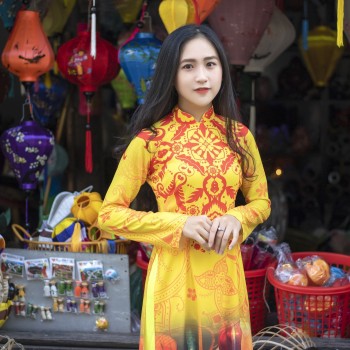
Hue Festival
Date: April, May or June (date varies)
Hue Festival is a biennial celebration that takes place in Hue City. The festival was originated dated back in 2000 is held to preserve the traditional customs that have been practiced since the Nguyen Dynasty.
Hue Festival is held every two years in April, May, or June. It takes place at 40 venues around the city. Unique events include the Hue Poetry Festival, Dialogue of Drums and Percussion, and Ao Dai fashion shows. Street performances, film screenings, and art exhibitions are also held throughout the festival week.
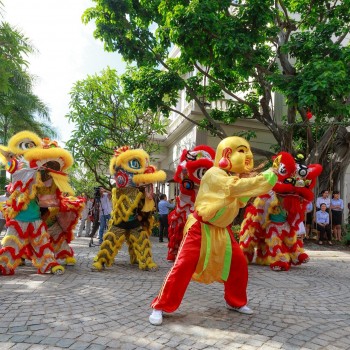
Tet Festival
Date: January-February
One of the famous festivals in Vietnam- the Tet Festival, was celebrated initially by Vietnamese farmers to thank the gods for the arrival of spring, dates back thousands of years. Nowadays, it’s a time to pay respects to ancestors and welcome the New Year with family members.
It is a three-day celebration between late January and early February. Still, festivities may continue for about a week or more with every endeavor made to indulge in eating, drinking, and socializing. In the weeks leading up to Tet Festival, all homes are thoroughly cleaned to eliminate any bad luck of the old year. The streets are filled with people performing mua lan or lion dance performances throughout the day, with drums, bells, gongs, and firecrackers going off to ward off evil spirits. At the same time, ancestral altars are presented with five local fruits and votive papers.
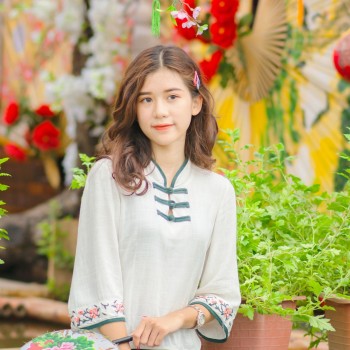
Mid-Autumn Festival
Date: 14th-15th September
Mid-Autumn Festival, also known as the harvest festival, held on the 14th and 15th day of the lunar month, features a wide range of activities such as children carrying paper lanterns, lion dances, and food booths selling mooncakes, sticky rice, fruits, and various sweets. Households set up an altar during the night of the Mid-Autumn Festival, on which they display offerings in honor of the full moon.
Mid-Autumn Festival in Hoi An, a UNESCO-listed Ancient Town, holds many street performances, lantern processions, and art exhibitions. Children also participate in essays, drawing, and coloring contests during Mid-Autumn Festival. At the same time, visitors can enjoy breathtaking sights of colorful paper lanterns lining the Thu Bon Riverside and Japanese Covered Bridge.

Perfume Festival
Date: February or March
Perfume Festival draws multitudes of local pilgrims from all over Vietnam to partake the Hanoi’s iconic Perfume Pagoda, where they pray for a prosperous year and pay their respects to Buddha. The pilgrimage starts with a dragon dance at Den Trinh Pagoda on the 15th day of the 1st Lunar, where pilgrims and travelers travel by boat along the Yen River to the base of Huong Mountain, passing by limestone caves and rice fields.
The journey continues on foot by climbing hundreds of stone steps towards Huong Tich Cave, offering a colorful display of food offerings, statues of deities, lit incenses, and praying locals.
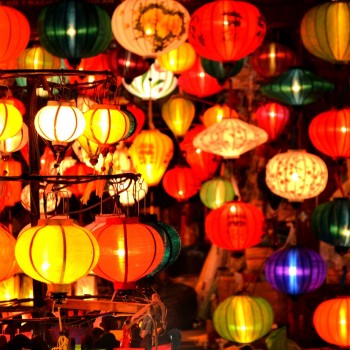
Hoi An Lantern Festival
Date: 14th day of every month
Hoi An Lantern Festival also referred to as Full Moon Festival, is a monthly event that transforms the quaint UNESCO World Heritage Site into a spectacular display of paper lanterns. On the 14th day of each lunar month, every shop, restaurant, bar, and business in the Ancient Town switch off all electricity and rely on hundreds of candles and lanterns.
The Hoi An Lantern Festival is held in many parts of Vietnam. Still, UNESCO lists the town of Hoi An as the most popular place for visitors and tourists to come and participate in the monthly festival because of the dedicated lanterns.
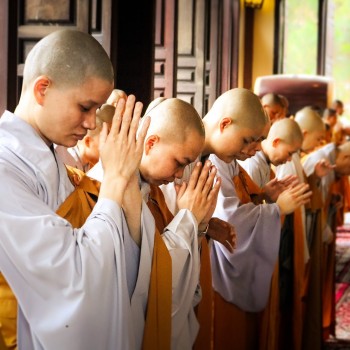
Buddha’s Birthday
Date: 8th May
Devotees in Vietnam celebrate Buddha’s Birthday. On the 8th day of the 4th lunar month, many temples are adorned with lavish decorations, with locals offering fruit, flower garlands, and various Vietnamese dishes. This event often draws thousands of visitors to partake in street parades and prayer sessions.
Held at Phap Bao Pagoda, the day commences with a procession of monks along the streets of Hoi An Ancient Town before locals flock to the temple to perform religious rites and listen to Buddhist scriptures. In the evening, expect a lively parade along the main road of the Old Town, where animals are released while flower garlands and lanterns are placed along the riverbank. Aside from experiencing the local culture, Buddha’s Birthday is also a fabulous time to enjoy vegetarian dishes sold by street vendors in Hoi An.

Wandering Souls Day (Trung Nguyen)
Date: 15th September
Wandering Souls Day is one of the enormous festivals in Vietnam, also known as the Trung Nguyen; the holiday takes every 15th day of the 7th lunar month in the Buddhist calendar.
The Wandering Souls Day festival is being celebrated all over the country, from temples, pagodas, local homes, and even government buildings and offices. On the eve of the festival, families flock to Buddhist temples and graves of their departed loved ones to offer prayers, flowers, sticky rice cakes, sugarcane, and fruits. Paper money and clothes are also burned during this time of the year.

Phu Giay
Date: Late March to early April
The Phu Giay Festival is one of Vietnam’s biggest national festivals. The event celebrates and pays tribute to Lieu Hanh, the Goddess or “Holy Mother” of Vietnam. Phu Giay Festival draws worshippers of the goddess Lieu Hanh to Phu Giay Pagoda, where they pray for good fortune while carrying decorated bamboo relics and wearing traditional costumes.
Situated 88km east of Hanoi, the temple hosts various games such as capture-the-flag, human chess, lion dancing, and wrestling. Visitors can also enjoy folk dance and classical songs such as trong Quan, cheo (satirical musical theatre), and ca tru (chamber music).
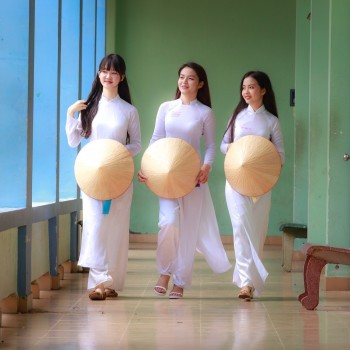
Lim Festival
Date: 12th February
Lim Festival is a lively festival held in Lim Village, located within the Tien Du District, Bac Ninh Province, on the 12th and 13th day of the first lunar month. Several stages are built within the village where you get to see locals performing in traditional costumes singing UNESCO-listed Quan ho folk. Male singers who are called “lien anh” in Vietnamese wear “khan xep (khăn xếp)” and “ao dai (áo dài)” while female singers who are called “lien chi” in Vietnamese wear four-panel traditional dress (called “ao tu than (áo tứ thân)” in Vietnamese) and “non quai thao (nón quai thao).” In pairs of one female and one male, they sing together.
Attractions / Top Sights

Nha Trang
When to visit: February to April
Nha Trang, also known as the Riviera of the South China Sea, is Vietnam’s most famous seaside resort town located along the second most stunning bays in the country. It features a six-kilometer stretch of beautiful coastline with stunning white sandy beaches, pristine waters with abundant marine life, and thriving reefs with a lush mountain range at each end.
The city has about 300,000 inhabitants and is more lively and urban than other beach destinations like Mui Ne and Phu Quoc. It’s also the scuba diving hub of Vietnam.

Hạ Long Bay
When to visit: March to April / October to December
When to visit: https://whc.unesco.org/en/list/672
Hạ Long Bay, which means "descending dragon," is a UNESCO World Heritage Site and widespread travel destination in Quảng Ninh Province, Vietnam, situated in north Vietnam round a 120-kilometer long coastline.
The top tourist attraction in Vietnam, Ha Long Bay, features numerous islands with thick jungle vegetation, forming a spectacular seascape of limestone pillars. Several islands are hollow, with enormous caves; other islands include lakes, and some support floating villages of fishers.
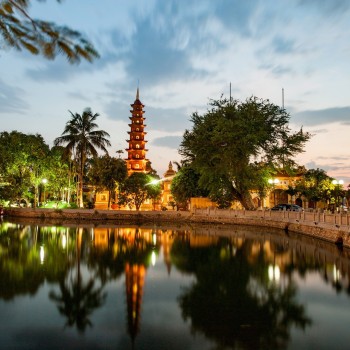
Hoan Kiem Lake
When to visit: September to November / March to early April
Hoan Kiem Lake is one of the top picturesque spots in the beautiful city of Hanoi and serves as the locals’ favorite leisure spot. Its unique beauty draws many tourists each year, Vietnamese and many foreigners.
Hoan Kiem means “returned sword,” The name comes from a legend in which King Le Loi was given a magical sword by the gods, which he used to drive out the invading Chinese. Later he returned the sword to the Golden Turtle God in the lake.

Mui Ne
When to visit: between August and April
Mui Ne is Phan Thiet’s most famous coastal resort town, spanning 15 kilometers of sandy beaches lined with an array of dining and shopping venues and luxurious beachfront resorts. The northern end of Mui Ne Bay is home to a traditional fishing village that offers a picturesque view of the coastline lined with swaying palm trees and colorful fishing boats moored on the water.
With its strong sea breezes, it is a perfect destination in Vietnam for kite- and windsurfing. Additionally, Mui Ne boasts famous picturesque dunes located a short distance north of the town. The vast sandy expanse provides some great panoramic views, especially during sunset.
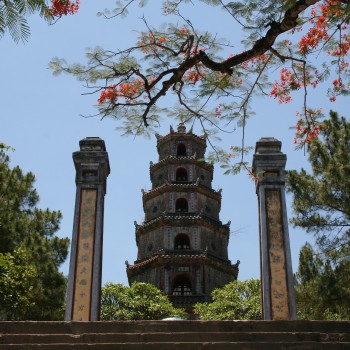
Thien Mu Pagoda
When to visit: September to November / March to early April
The ancient Thien Mu Pagoda in Hue is the tallest in Vietnam, with seven stories. The pagoda overlooks the Perfume River and is regarded as the unofficial symbol of the former imperial capital. The temple was built in 1601 during the rule of the Nguyễn Lords.
In the middle of the area is where Dai Hung Palace – the main sanctuary of Thien Mu Pagoda. Passing the 3-door gate are 12 monumental wooden sculptures of fearsome temple guardians. Buddha sits in Thien Mu Pagoda is worshiped with impressive statues and a giant bell, measuring 2.5m in height and 2 tons in weight, created in the early 18th century. Fragrant incense smoke fills the air there all day long, making the praying for blessings calm and peaceful.

Terraced Rice Fields in Sapa
When to visit: March to May and September to November
Terraces Sa Pa is a town in northwest Vietnam not far from the Chinese border. Rice terraces can be found in the Muong Hoa valley between Sa Pa town and the Fansipan Mountain, on a backdrop of thick bamboo woodlands. Terraced rice fields in Sapa were voted as one of seven most beautiful and impressive ones of Asia and the world by readers of the US’s magazine Travel and Leisure.
Rice terraces in Sapa are slopes claimed from nature for cultivation in hilly or mountainous areas. Local ethnic minority people can grow rice and establish terraced rice fields, one after another, from the foot to nearly the top of mountains.

Hoi An Town
When to visit: February to May
Hoi An Town is an incredibly well-preserved trading international port dating from the 15th to the 19th century. This fishing-village-turned-tourist attraction is located on the coast of the South China Sea. The city's heart is still the Old Town, full of winding lanes and Chinese-styled shops.
Hoi An Town is sometimes called the "Venice of Vietnam" because of the narrow canals that cut through part of the town. This place is an intersection of Eastern-Western culture, the crystallization of Vietnamese, Chinese, Japanese, and European countries manifested in cuisine, architecture, and local traditions.
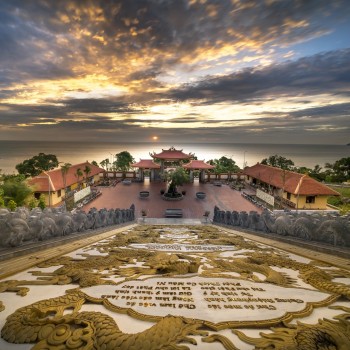
Phu Quoc Island
When to visit: October to early November
Located in front of the Cambodia coast, Phu Quoc is the largest island in Vietnam. The island features pristine tropical forests, untouched coral reefs, and great beaches. One of its beaches, named Bai Dai (Long Beach), was chosen by ABC News as five beautiful and clean beaches.
Phu Quoc is famous for globally producing the best nuoc mam or fermented fish sauce. Phu Quoc Island boasts stunning beaches, romantic sunsets, evergreen forests, and a serene atmosphere, making it a perfect holiday destination for travelers.
.jpg)
Mekong Delta
When to visit: October to November
The Mekong Delta is the region in southern Vietnam where the Mekong River approaches and empties into the sea. It is a vibrant and lush area, covered with rice fields, producing about half of Vietnam’s agricultural output. Life in the area revolves around water, from the famous floating markets to the vast agricultural industries; various fruits, flowers, and livestock grow in the region.
Cần Thơ is the hugest city in the Mekong Delta region and home to the Cái Răng floating market, where you’ll see hundreds of boats loaded with more varieties of fruits than you ever thought possible.
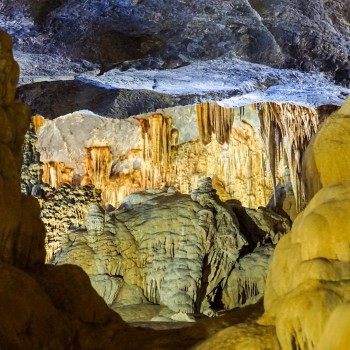
Phong Nha Caves
When to visit: Between February and April
The Phong Nha Caves are hundreds of cave systems, many large enough to hold entire city blocks. Phong Nha is world-renowned throughout its adventure treks and caving exploration. The area boasts the breathtaking UNESCO heritage-listed National Park, Phong Nha Ke-Bang.
The National park and the regions surrounding Phong Nha are home to hundreds of caves; many are now open for tourism, including the most extensive cave globally and the most significant and most prominent Hang Son Doong.

